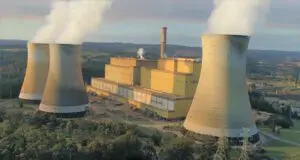Despite the mammoth disruption caused by the global COVID-19 pandemic throughout 2020, the top global debt and equity investors nevertheless continued to pour capital into the renewable energy sector, accelerating their race away from the climate-related risks associated with fossil fuel assets.
A total of $US501 billion ($A683 billion) was invested in the clean energy sector in the last financial year, an increase of 9% over the previous year and a new record level of clean energy investment.
Unsurprisingly, the renewable energy segment of the clean energy sector led the way with $US303 billion ($A413 billion), accounting for 60% of total investment committed towards the global low carbon energy transition.
These are the headline findings from a new report published on Monday by the Institute for Energy Economics and Financial Analysis (IEEFA) entitled Global Investors Move into Renewable Infrastructure.
The report highlights not only the record level of investment attracted by the low carbon energy transition, but also demonstrates the insistent move away from investing in fossil fuel projects caused by the threat of exposure to climate-related risks and the volatility in fossil fuel pricing and demand.
“Global investors are accelerating their collective move away from the massive climate-related risks associated with fossil fuel assets and building capacity so as to increasingly deploy huge amounts of capital into renewable energy infrastructure projects,” said Tim Buckley, report co-author and IEEFA’s Director of Energy Finance Studies, Australia/South Asia.
“The continued expansion of investment shows the resilience of the renewable energy sector despite the economic disruption of the COVID-19 pandemic.”
IEEFA’s report lists 10 global commercial banks involved in renewable energy infrastructure debt lending, selected from BNEF’s Clean Energy League Table ranking, which together lent $US30 billion to renewable energy projects in 2020, and outlines how these banks’ investment trends are starting to pivot into clean energy assets.
The report also outlines 10 world-leading equity investors and their renewable energy activities.
Unfortunately, though somewhat unsurprisingly, the list of debt lending banks in the report include no US banks but is instead dominated by large European banks and three Japanese banks.
These banks have made it a priority to scale up their investment in the clean energy sector to align themselves with the Paris agreement as well as the ambitious pledges of the 1.5°C goal under the Glasgow Net Zero Banking Alliance announced in April 2021.
Not only this, however, but the banks are actively seeking to reduce their exposure to fossil fuel risks.
The 10 equity investors chosen to be highlighted in the report were selected due to their proven track record in renewable energy investment and the commitment of these investors’ top management to mobilising finance to combat climate change.
The list included 2 pension funds, 3 asset management firms, 1 dedicated renewable energy infrastructure fund, 2 core infrastructure funds, 1 diversified private equity firm and 1 diversified financial services group.
“The two pension funds in our list, Canadian pension funds CPPIB and CDPQ, both have significant investment in renewable energy infrastructure across geographies,” said Saurabh Trivedi, report co-author and IEEFA Research Analyst.
“We also include a few smaller infrastructure funds such as Cubico Sustainable Investments and Global Infrastructure Partners, because in contrast to many other larger funds, they are aggressively investing in the sector including in greenfield renewable energy investment, which demonstrates the risk-taking and capacity building of these funds as well as their commitment to climate goals.”
The report also highlights 10 “globally significant” renewable energy projects so as to illustrate the rapid scaling up of financial and operating capacity in the sector.
These projects include the 3.6GW Dogger Bank Offshore Wind Farm in the UK, the 2GW Al Dhafra Solar PV Plant in the UAE, and the Asian Renewable Energy Hub in Australia which, though it has recently received several potentially life-threatening setbacks, hopes to develop 26GW of wind and solar energy projects in the Pilbara region of Western Australia.
“Strong risk-adjusted return prospects and stable project cashflows, along with green economic stimulus packages, particularly from Europe, have helped to drive solar energy installation and a US$50bn surge in offshore wind power projects,” says Buckley.
“Last year we saw the financing of the two largest renewables projects to date, the 3.6GW Dogger Bank offshore North Sea wind farm and the 2GW TAQA Al Dhafrah in the United Arab Emirates.
“These mammoth projects require investment on a staggering scale and we’re seeing global investors racing to deploy capital into the growing opportunities of the energy transition, which will grow into a multi-trillion-dollar annual investment opportunity if the world is to deliver on its climate goals.”









